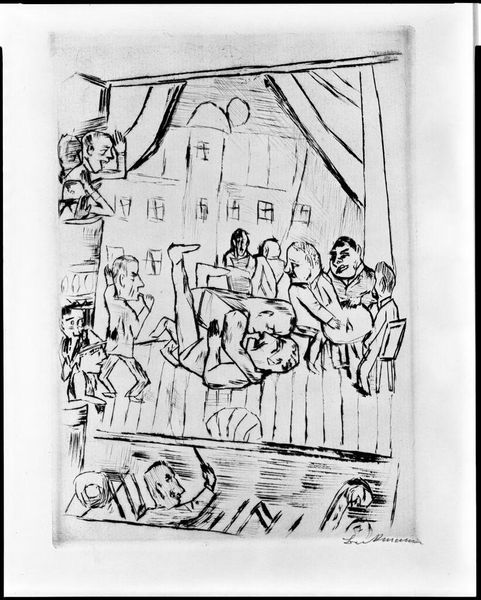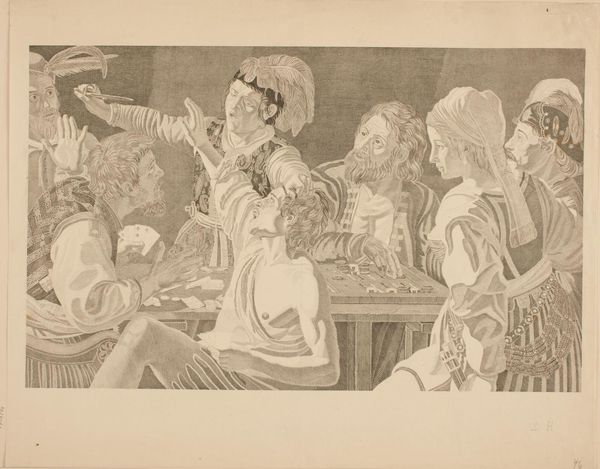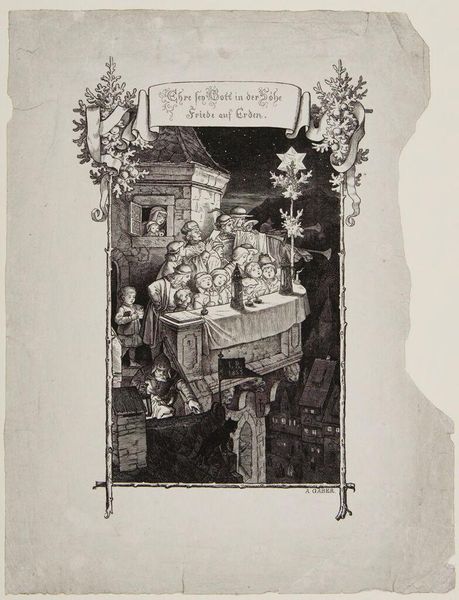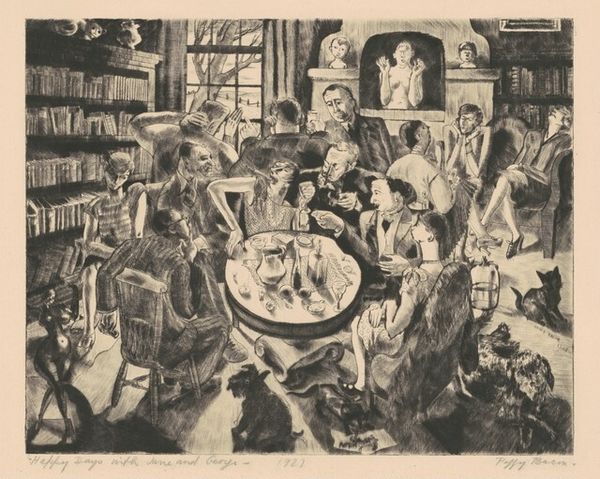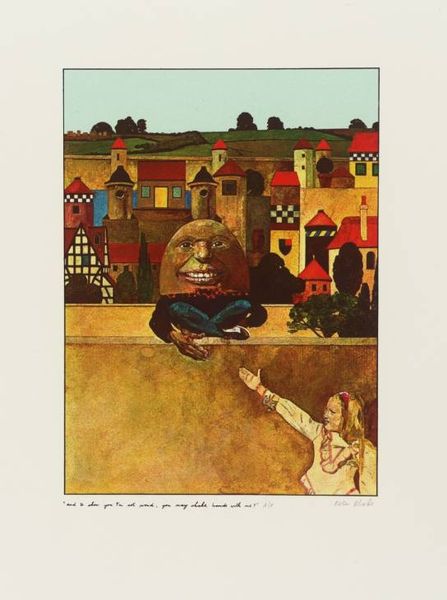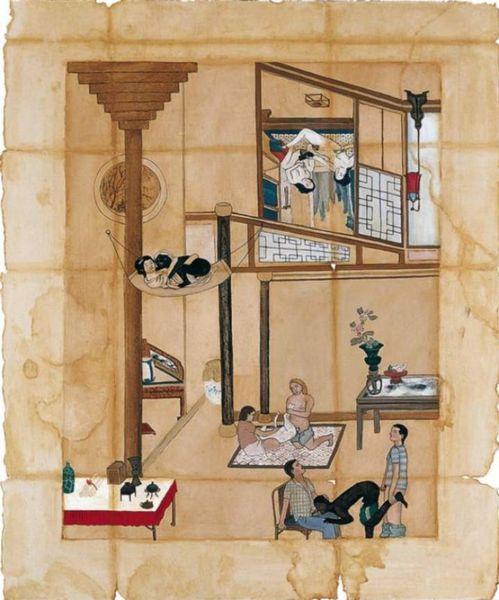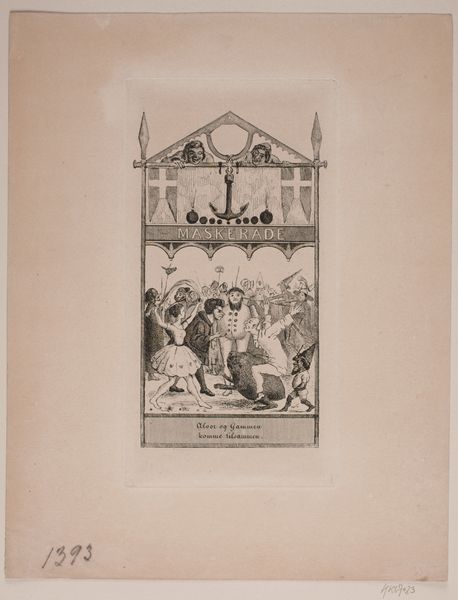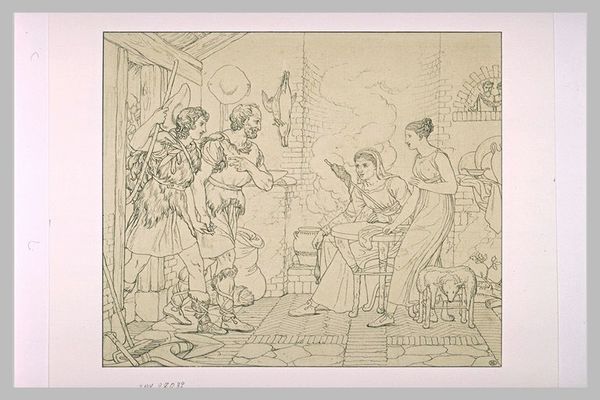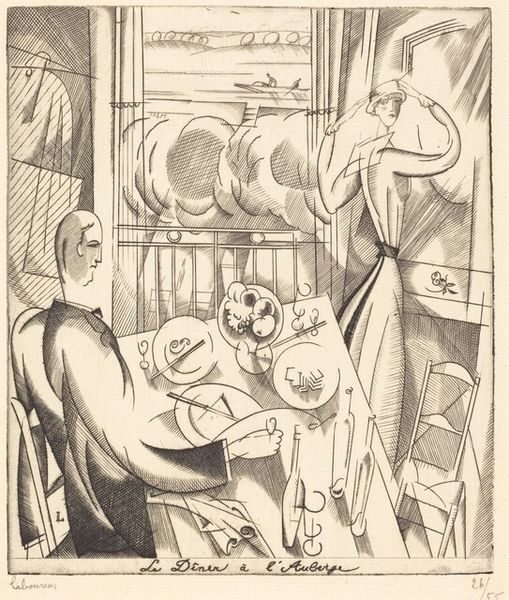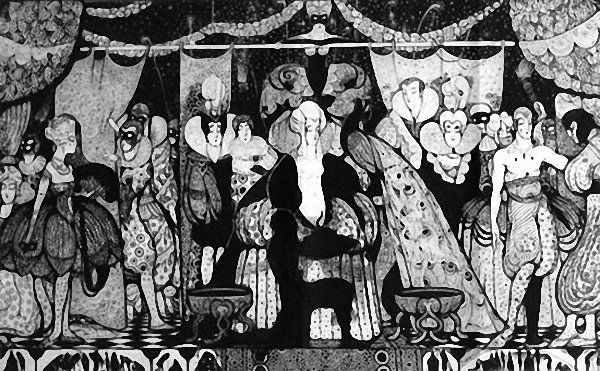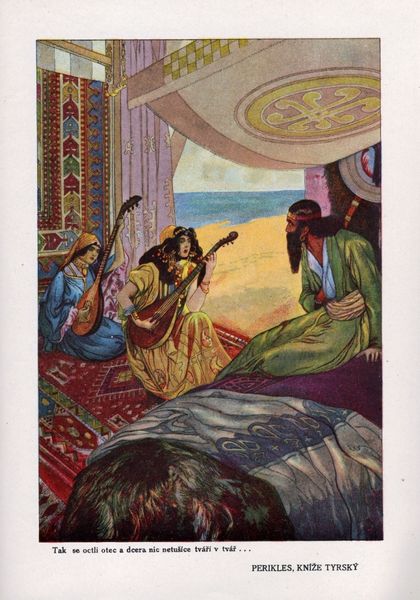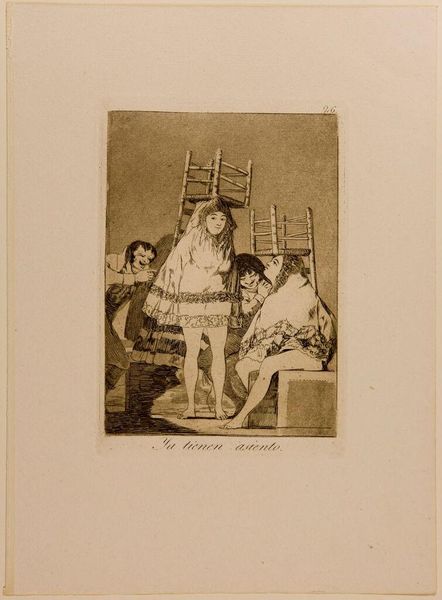
textile
#
enamel pin design
#
childish illustration
#
cartoon like
#
cartoon based
#
textile
#
text
#
food illustration
#
watercolour bleed
#
watercolour illustration
#
cartoon style
#
cartoon carciture
#
cartoon theme
Copyright: Public domain
Curator: This textile work, "Puppet Theatre" by Aladar Korosfoi-Kriesch, dates back to 1907. Its quaint, storybook aesthetic immediately struck me. Editor: It's quite charming. The texture makes it look homespun, as if crafted by hand within a domestic environment. It radiates warmth, a sort of comforting aesthetic naivety. Curator: I agree. And I believe that feeling is intentional. Korosfoi-Kriesch was very involved in arts and crafts movements seeking to elevate traditionally marginalized art forms. Editor: This looks to be an outstanding example. How would the act of weaving fit into Korosfoi-Kriesch's political and social convictions? Was the piece intended for bourgeois consumption? Curator: It's difficult to say definitively. Tapestries were being revived for both bourgeois homes and public spaces. However, the labor invested in the craft inherently pushed back against mass-produced commodities. The figures depicted feel folk-inspired. Editor: Absolutely. It has that stylized simplicity. Tell me, how might the theatrical presentation being attended by an audience relate to discussions on artistic interpretation? Curator: That’s an interesting line of inquiry. Considering this as part of a broader attempt to bring fine art and craft together makes sense; to me, this work presents the democratization of culture by representing an entertainment available and appreciable by all levels of society. Editor: So the social message lives through accessible materiality as well as a readily legible, universally recognized narrative form. This dialogue between medium and meaning is fascinating, suggesting this tapestry wasn't only decorative. Curator: Precisely. Korosfoi-Kriesch is prompting us to look at where, how, and for whom art is produced. The intentional simplicity belies a sophistication in how it addresses artistic values. Editor: The tapestry compels me to appreciate not only its overt depiction, but also how its production embodies and supports certain artistic ideals, social inclusivity through accessible artmaking. Curator: Absolutely. The piece leaves us pondering not just art’s story, but whose story gets told through art, and in what material form that narrative takes shape.
Comments
No comments
Be the first to comment and join the conversation on the ultimate creative platform.
